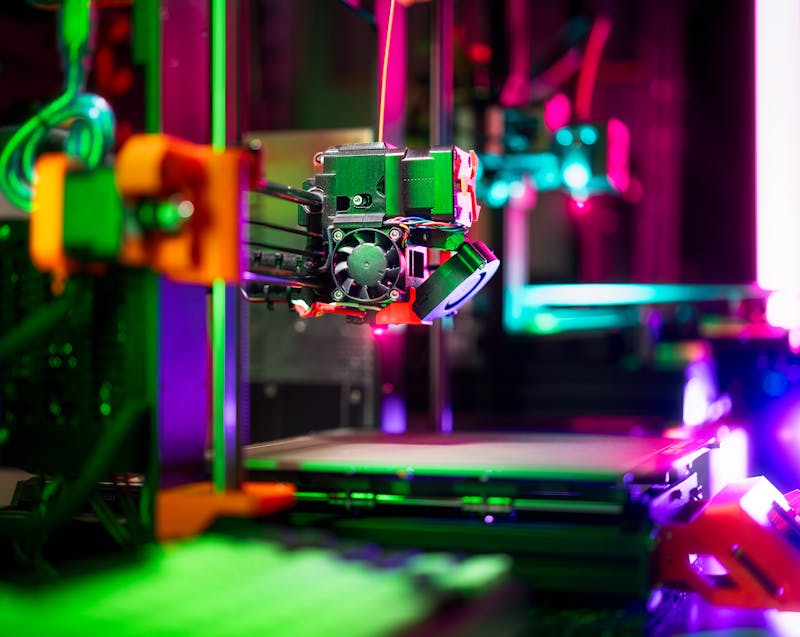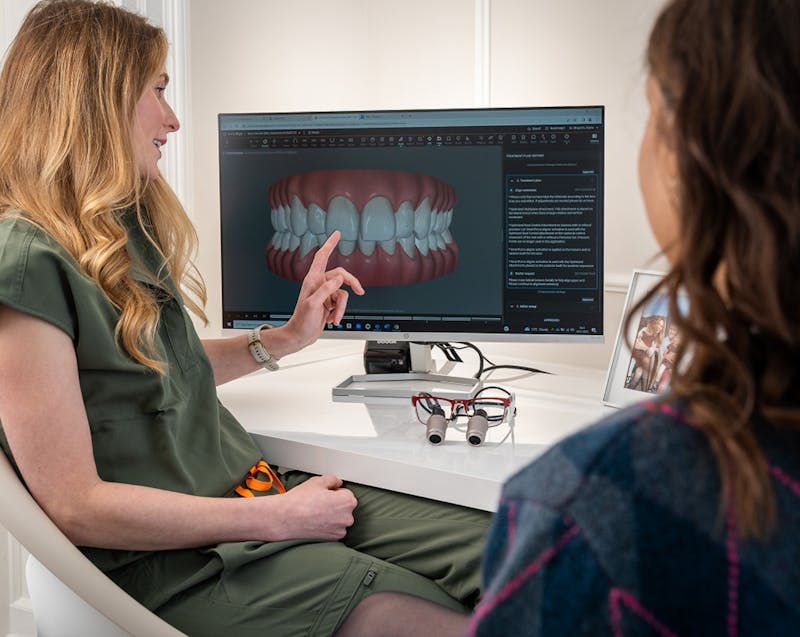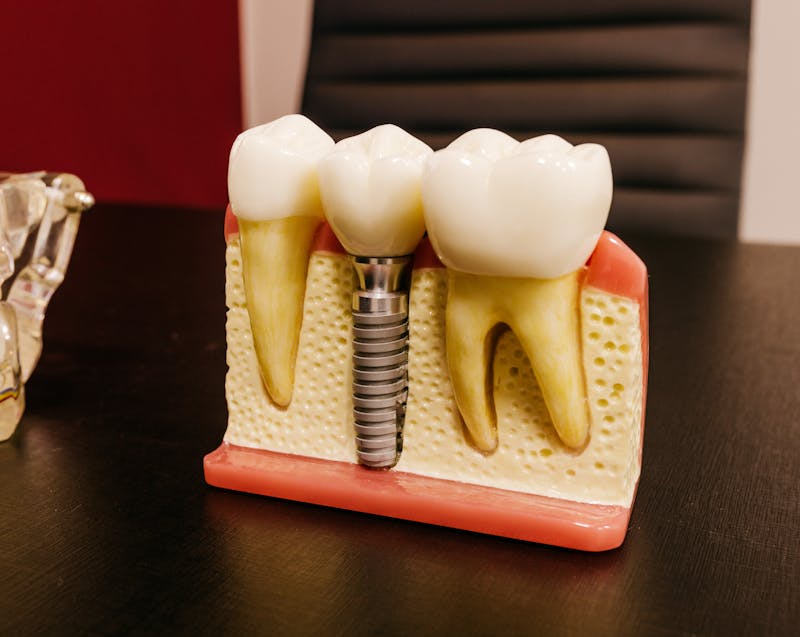
- Modern dental technology—such as 3D imaging, CAD/CAM design, and guided implant surgery—has dramatically improved the accuracy and comfort of dental implant procedures.
- Digital imaging tools like CBCT scans and intraoral scanners allow dentists to create precise, data-driven implant plans tailored to each patient’s anatomy.
- Guided implant surgery and 3D-printed surgical guides minimize invasiveness, reduce recovery time, and ensure consistent, predictable outcomes.
- Artificial Intelligence (AI) and digital workflows streamline every step of the process—from consultation to post-operative monitoring—enhancing safety and efficiency.
- Patients who consult the best dentists who offer free implant consultations and treatment planning can experience firsthand how technology-driven care leads to safer, more comfortable, and longer-lasting results.
- Continuous innovation, including smart implants and regenerative materials, promises an even more advanced, patient-friendly future for implant dentistry.
Dental implants have long been recognized as one of the most reliable solutions for missing teeth, providing a durable, natural-looking replacement that restores both function and confidence. Yet, in the past, implant placement could be a daunting process—requiring invasive procedures, lengthy recovery times, and a fair amount of guesswork. Today, advancements in dental technology have completely revolutionized how implants are planned and placed. With tools like 3D imaging, computer-guided surgery, and digital modeling, dental professionals can now create precise, personalized treatment plans that enhance both comfort and success rates.
For patients seeking the best dentists who offer free implant consultations and treatment planning, understanding these technologies can help them make informed decisions about their oral health. Let’s explore how modern technology makes dental implant planning more accurate, efficient, and comfortable than ever before.
The Importance of Accuracy in Dental Implant Planning
Accuracy is the cornerstone of successful dental implant treatment. The implant post must be placed precisely within the jawbone to ensure proper function, stability, and long-term success. Even a small deviation in angle or depth can affect bite alignment, gum health, and the integrity of the restoration.
Before modern imaging and digital planning, dentists relied on two-dimensional X-rays and manual assessments. While experienced professionals achieved good results, these methods left room for human error and unpredictable outcomes. With today’s digital tools, however, every phase of implant planning—from diagnosis to placement—is based on precise data and real-time visualization.
Key reasons why precision matters include:
- Preserving surrounding anatomy: Accurate imaging helps dentists avoid critical structures such as nerves, sinuses, and blood vessels.
- Ensuring implant stability: Correct angulation and depth placement enhance osseointegration, allowing the implant to bond securely with the bone.
- Improving aesthetics: Accurate placement ensures the prosthetic tooth aligns perfectly with neighboring teeth and supports natural facial symmetry.
- Reducing complications: Technology-driven precision minimizes the risk of infection, discomfort, and long-term implant failure.
Digital Imaging: The Foundation of Precision
Modern dental imaging has transformed implant dentistry by offering three-dimensional visualization of the patient’s oral structure. Two of the most valuable imaging technologies today are Cone Beam Computed Tomography (CBCT) and intraoral scanners.
- Cone Beam Computed Tomography (CBCT)
CBCT uses a cone-shaped X-ray beam to capture detailed 3D images of the patient’s teeth, bone, nerves, and sinus cavities. This technology enables dentists to view every angle of the mouth with incredible accuracy.
Benefits of CBCT imaging include:
- Comprehensive anatomical detail: It provides cross-sectional views of bone density and volume, helping determine the ideal implant location.
- Safer planning: Allows dentists to identify and avoid sensitive areas like nerve pathways or sinus membranes.
- Predictable outcomes: Enhances surgical precision by eliminating guesswork and ensuring the implant is positioned exactly where it needs to be.
- Intraoral Scanners
Gone are the days of uncomfortable dental impressions made from sticky molds. Intraoral scanners capture a digital map of the patient’s teeth and gums using a small handheld device.
Advantages of intraoral scanning include:
- Increased comfort: No more messy impression materials or gagging sensations.
- Instant digital models: Data is uploaded immediately to the software for 3D visualization and planning.
- Accurate representation: Enables dentists to design perfectly fitted crowns and restorations.
By combining CBCT and intraoral scans, dentists can create a complete 3D model of a patient’s mouth—forming the foundation for precise and comfortable implant treatment planning.
Computer-Aided Design and Manufacturing (CAD/CAM) in Implant Dentistry
Computer-Aided Design and Manufacturing (CAD/CAM) technology allows dentists to digitally design and fabricate custom implant components that fit each patient’s unique anatomy. This system integrates seamlessly with digital imaging tools, enabling a fully digital workflow from diagnosis to restoration.
Applications of CAD/CAM technology include:
- Designing abutments and crowns tailored to the patient’s bite and gum line.
- Simulating occlusion to ensure even distribution of bite forces.
- Creating models for accurate visualization before the procedure.
Key benefits for patients:
- Perfect fit and function: Each prosthetic is digitally customized for the patient’s mouth, minimizing discomfort and adjustment time.
- Speed and efficiency: Some practices offer same-day restorations, reducing waiting times and multiple appointments.
- Aesthetic precision: Crowns are color-matched and shaped digitally for a seamless, natural look.
CAD/CAM technology not only saves time but also ensures a higher level of accuracy than traditional lab methods, resulting in better long-term outcomes for dental implant patients.
Guided Implant Surgery: Accuracy Meets Safety
One of the most significant advancements in modern implantology is guided implant surgery. This method uses digital templates, or surgical guides, created from the patient’s 3D scans and planning data.
How guided surgery works:
- A dentist or oral surgeon uses CBCT and digital scans to identify the ideal implant sites.
- Specialized software maps out the precise angle, depth, and location for each implant.
- A custom surgical guide is 3D-printed to fit snugly in the patient’s mouth, directing the drill during surgery.
Benefits of guided implant surgery:
- Minimally invasive: The guide allows smaller incisions and less trauma to surrounding tissues.
- Faster recovery: Reduced swelling, bleeding, and post-operative discomfort.
- Shorter procedure time: Pre-planning every step improves efficiency during surgery.
- Consistent results: Ensures that implants are placed exactly where they were planned.
Patients benefit not only from enhanced safety but also from a more comfortable and stress-free experience. For those consulting the best dentists who offer free implant consultations and treatment planning, guided surgery is often highlighted as a major innovation that enhances both accuracy and comfort.
Artificial Intelligence (AI) in Dental Implant Planning
Artificial Intelligence is quickly becoming an integral part of dentistry. AI-powered software can analyze vast amounts of patient data to help dentists make faster, more accurate decisions.
AI applications in implant dentistry include:
- Automated bone analysis: AI evaluates bone density and identifies the optimal implant site.
- Risk prediction: Algorithms predict potential complications based on patient health and bone structure.
- Treatment optimization: AI can suggest implant sizes and positions that will yield the best long-term results.
- Improved diagnostics: Early detection of gum disease or bone deterioration that may affect implant success.
AI also enhances collaboration between dental professionals by standardizing data interpretation and enabling smarter treatment adjustments during planning and recovery phases. As this technology evolves, it’s expected to make implant dentistry even more predictable and personalized.
3D Printing and Custom Implant Components

3D printing has rapidly become one of the most transformative technologies in dental implantology. It allows for the creation of surgical guides, implant models, and even custom implant components with extraordinary precision.
How 3D printing enhances implant procedures:
- Custom surgical guides: Fabricated directly from digital scans for patient-specific accuracy.
- Prototyping and visualization: Dentists can print models of the patient’s jaw to plan and rehearse the procedure.
- On-demand components: Temporary crowns or abutments can be printed in-office for immediate placement.
Advantages for patients:
- Personalized comfort: Each guide and restoration fits precisely, reducing irritation and adjustment periods.
- Reduced waiting times: Same-day or next-day turnaround accelerates treatment completion.
- Enhanced predictability: The physical models help dentists ensure exact placement and alignment before surgery.
3D printing not only improves precision but also helps lower costs by streamlining the manufacturing process. This allows dental practices to offer advanced care options during free implant consultations and treatment planning sessions.
Digital Workflow Integration: From Consultation to Placement
A modern dental practice integrates digital tools across the entire treatment process, from the initial consultation to post-operative follow-up. This seamless digital workflow ensures better coordination, efficiency, and patient satisfaction.
Steps in a fully digital implant workflow:
- Initial consultation: The patient receives a comprehensive oral scan and CBCT imaging.
- Digital design: The dentist uses software to simulate implant placement and design the final restoration.
- Guided surgery: Custom surgical templates ensure accurate placement.
- Restoration fabrication: CAD/CAM or 3D printing creates perfectly fitted crowns or bridges.
- Follow-up and monitoring: Digital records track healing progress and implant integration.
Patient benefits:
- Transparent communication: Patients can visualize their treatment outcomes through digital simulations.
- Fewer appointments: Reduced chair time thanks to streamlined procedures.
- Greater comfort: Digital impressions and minimally invasive techniques eliminate traditional discomfort.
- Consistent quality: Every step of the process is controlled and verified digitally.
This digital integration marks a major leap toward patient-centered dental care. It gives patients peace of mind knowing their treatment is guided by precision technology from start to finish.
Enhancing Patient Comfort Through Technology
Beyond precision and efficiency, modern implant technology prioritizes patient comfort. Today’s tools and techniques are designed to make procedures less invasive and recovery periods shorter.
Key comfort-enhancing technologies include:
- Laser-assisted surgery: Reduces bleeding, swelling, and post-operative pain.
- Piezoelectric instruments: Use ultrasonic vibrations to cut bone gently without damaging soft tissues.
- Sedation options: Digital monitoring systems ensure safe and comfortable sedation for anxious patients.
- Post-operative tracking: Digital platforms allow patients to monitor healing progress and communicate easily with their dentist.
Dentists can now tailor every aspect of the implant experience—from planning to aftercare—to meet the patient’s comfort needs. For anyone exploring their options through the best dentists who offer free implant consultations and treatment planning, these advancements mean a more relaxed and confident journey toward a restored smile.
The Future of Dental Implant Technology
The evolution of dental technology shows no signs of slowing down. The next generation of implant innovations promises even greater accuracy, comfort, and long-term health benefits.
Emerging trends include:
- Smart implants: Devices equipped with micro-sensors that monitor pressure, temperature, and healing progress in real time.
- Regenerative materials: Bioengineered coatings that stimulate bone growth and speed up osseointegration.
- Augmented and virtual reality (AR/VR): Used for surgical planning, training, and even patient education.
- Teledentistry platforms: Enable virtual consultations, progress monitoring, and remote treatment adjustments.
These technologies will further bridge the gap between medical precision and patient convenience, making implant dentistry even more accessible and effective.
Choosing the Right Dentist for Advanced Implant Planning

With so many technological advancements available, patients should carefully choose a provider who integrates these innovations into their practice. The best dentists who offer free implant consultations and treatment planning use modern digital tools to provide clear, data-driven recommendations before any procedure begins.
When choosing a dentist for dental implants, consider:
- Technology used: Ask whether they employ CBCT imaging, CAD/CAM systems, and guided surgery techniques.
- Experience and training: Ensure the dentist has specialized implantology training and experience with digital workflows.
- Transparency: A good dentist explains each step of the process and shares digital models for patient understanding.
- Personalized care: Look for practices that tailor treatment plans based on detailed imaging and patient health data.
A free consultation gives patients a chance to see firsthand how these technologies enhance precision, comfort, and long-term implant success.
Conclusion: Technology and Comfort Unite in Modern Implant Dentistry
Modern dental technology has turned what was once a complex and uncomfortable procedure into a precise, efficient, and patient-friendly experience. From advanced 3D imaging and computer-guided surgery to AI-driven analysis and 3D printing, every innovation has one common goal: improving accuracy while maximizing patient comfort.
For patients considering implants, exploring options through the best dentists who offer free implant consultations and treatment planning is a smart first step. These professionals can demonstrate how cutting-edge tools and techniques work together to deliver beautiful, lasting smiles—safely and comfortably.
Dental implant technology continues to advance, offering new opportunities for precision, personalization, and peace of mind. In the hands of skilled professionals who embrace innovation, patients can look forward to a future where dental restoration feels as natural and effortless as their own smile.

